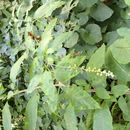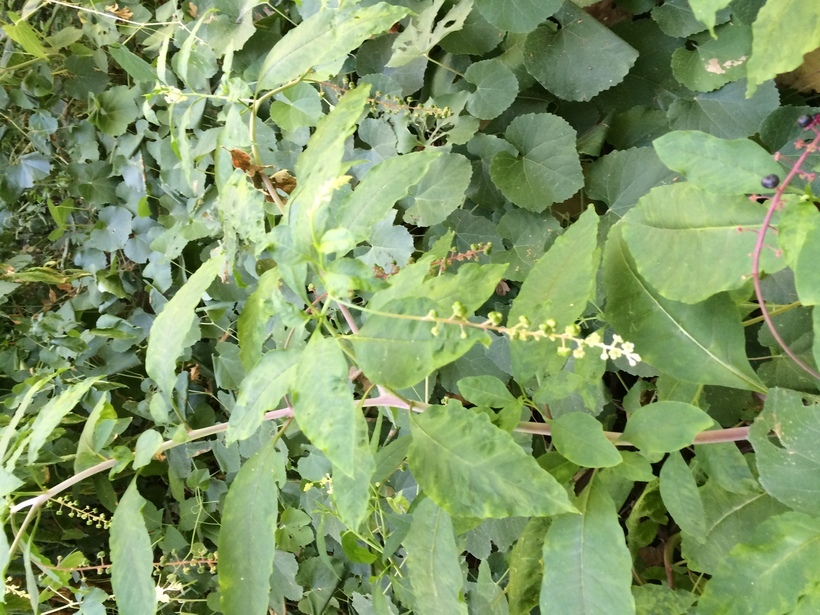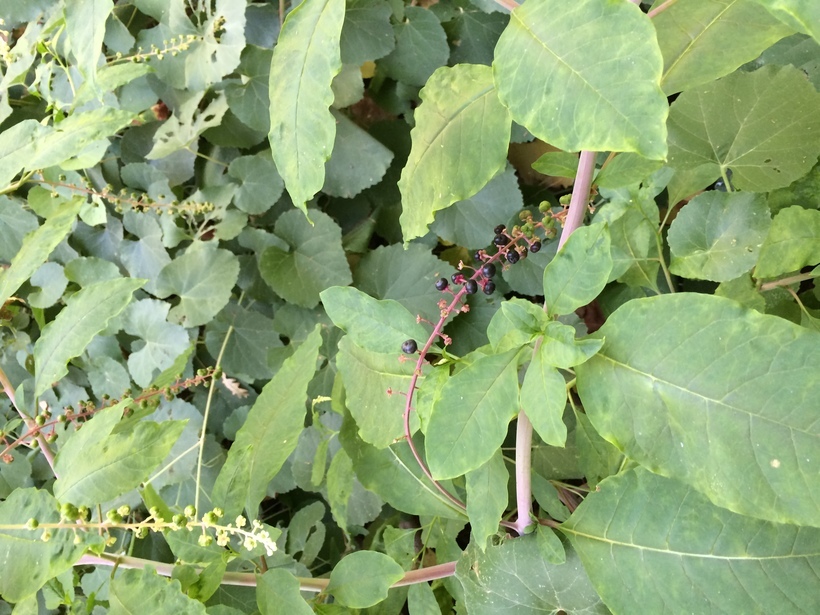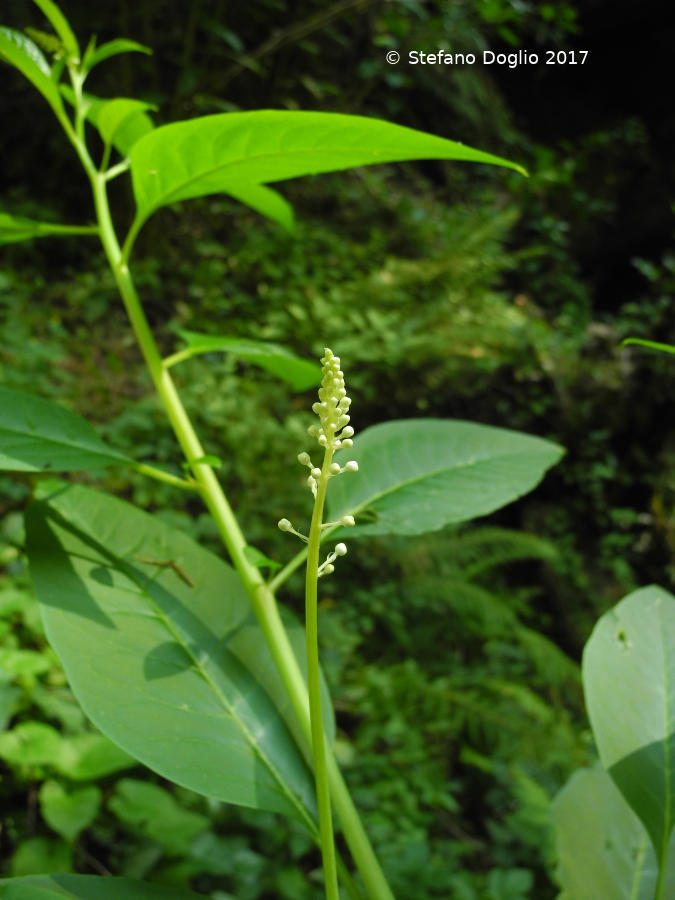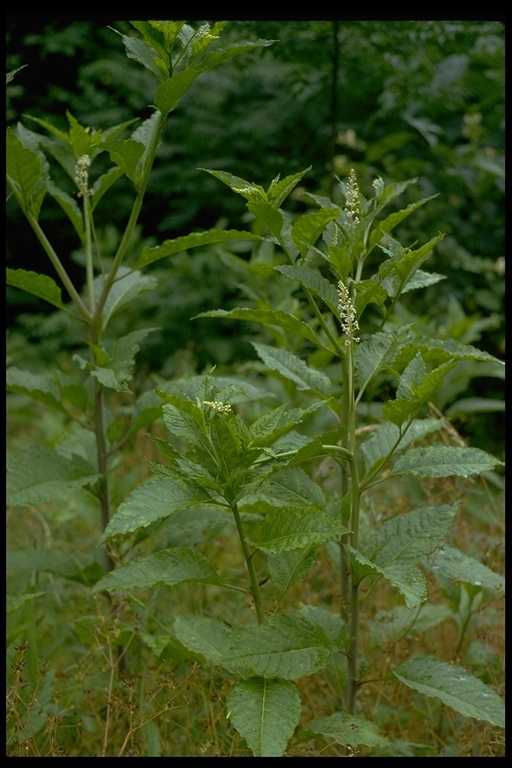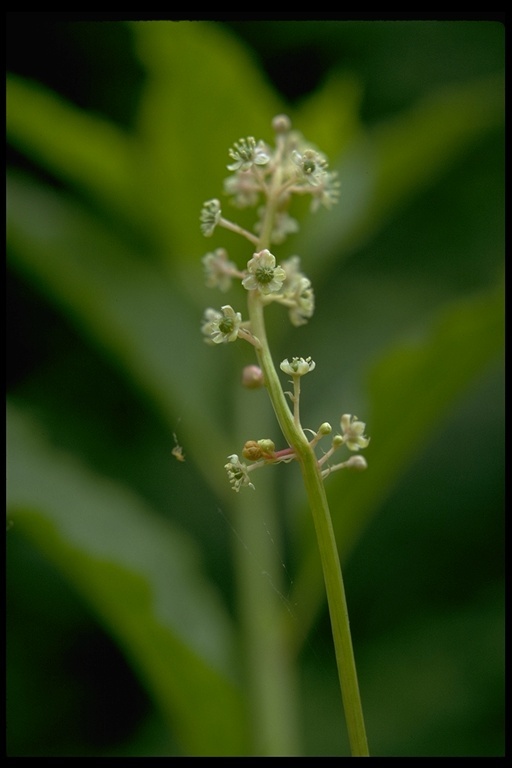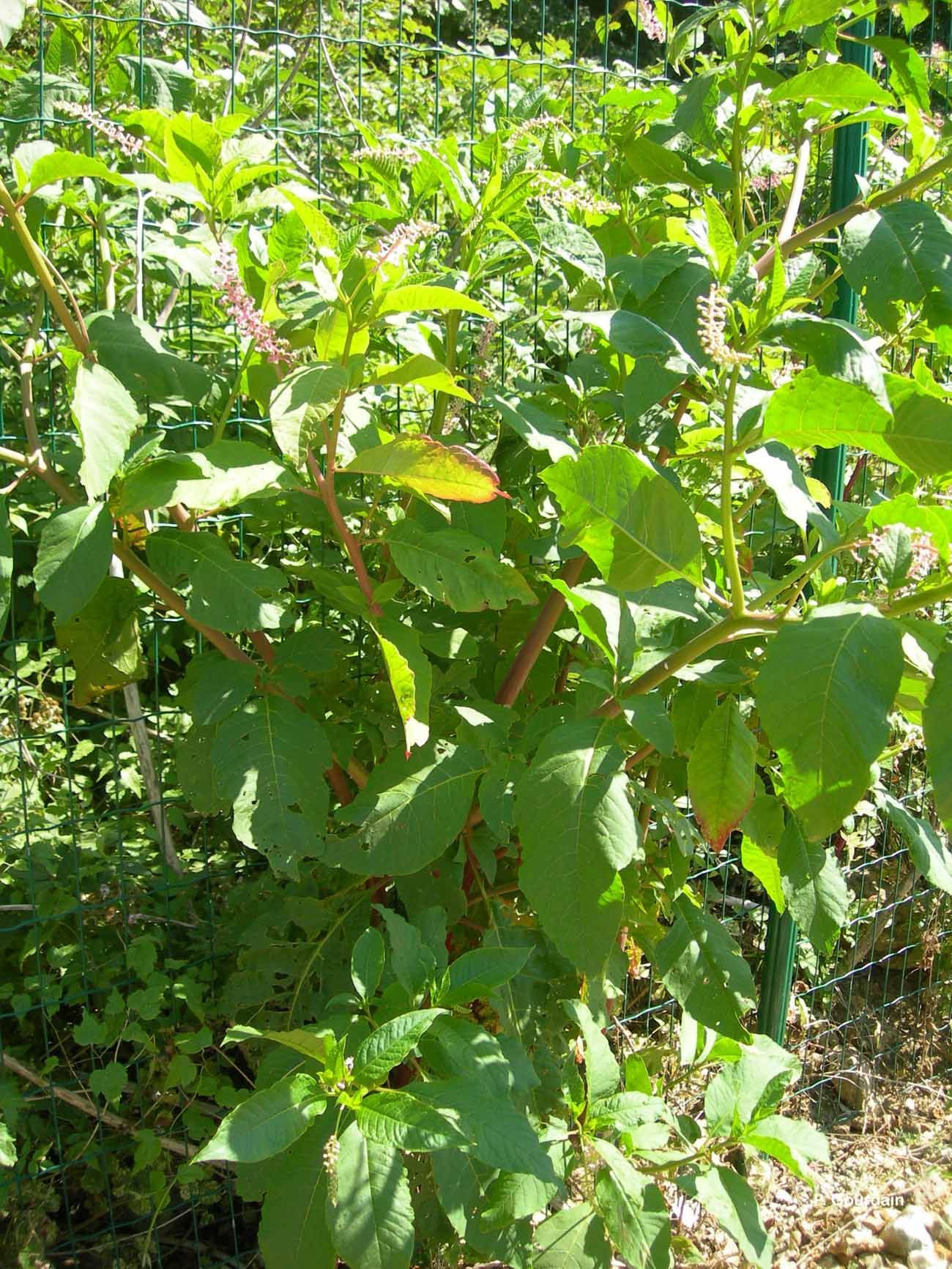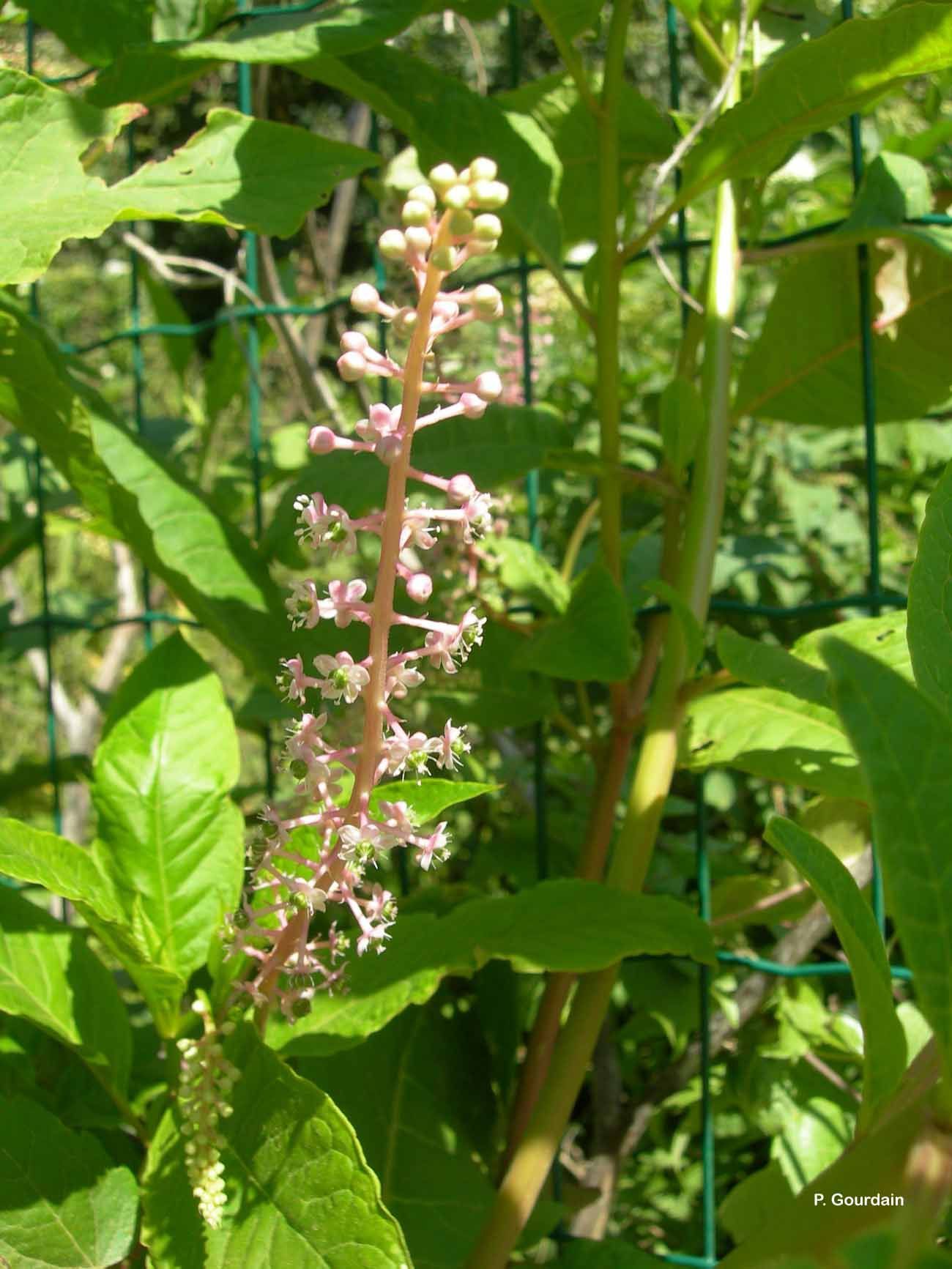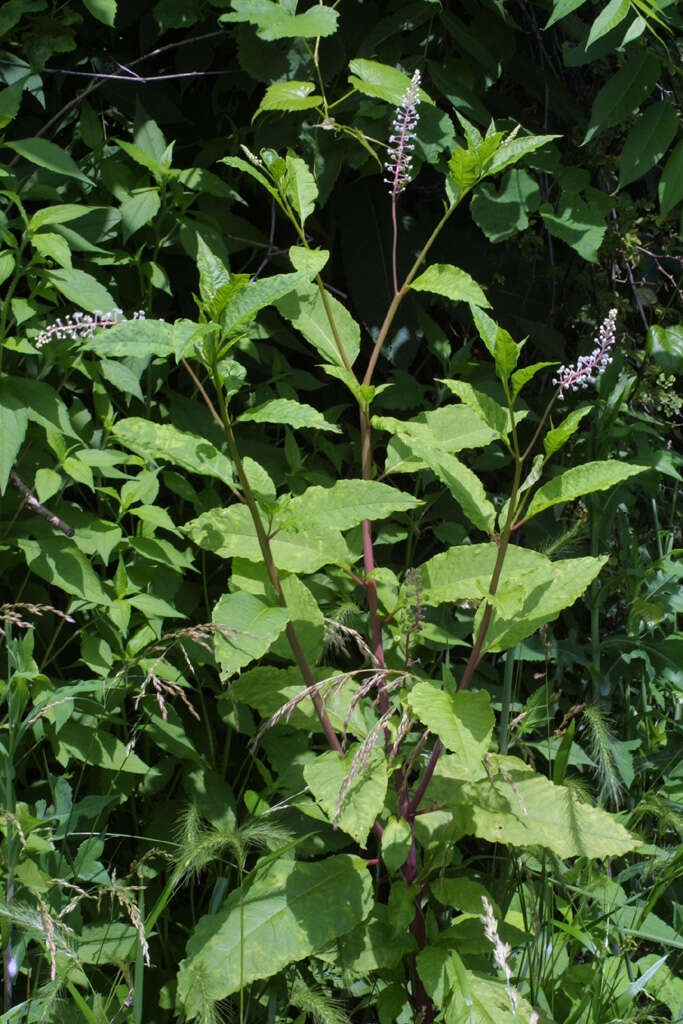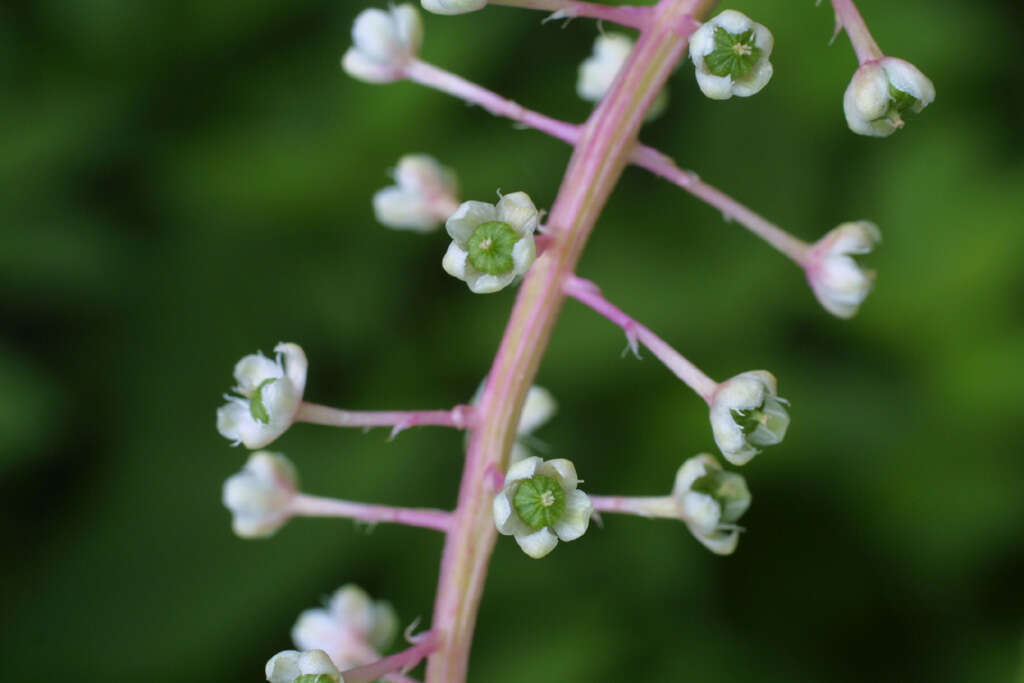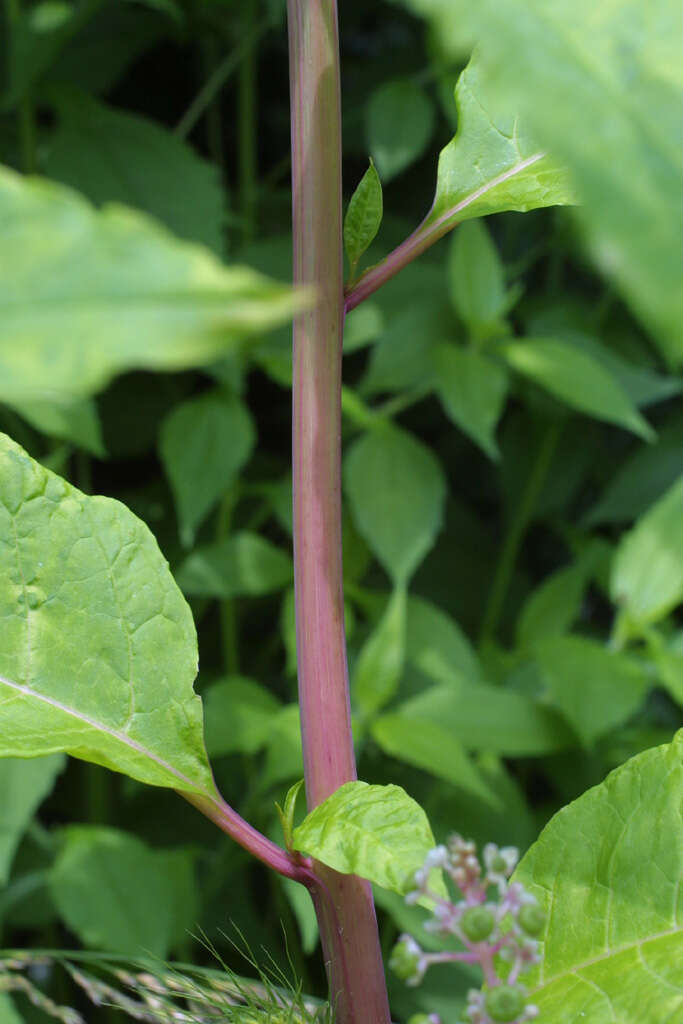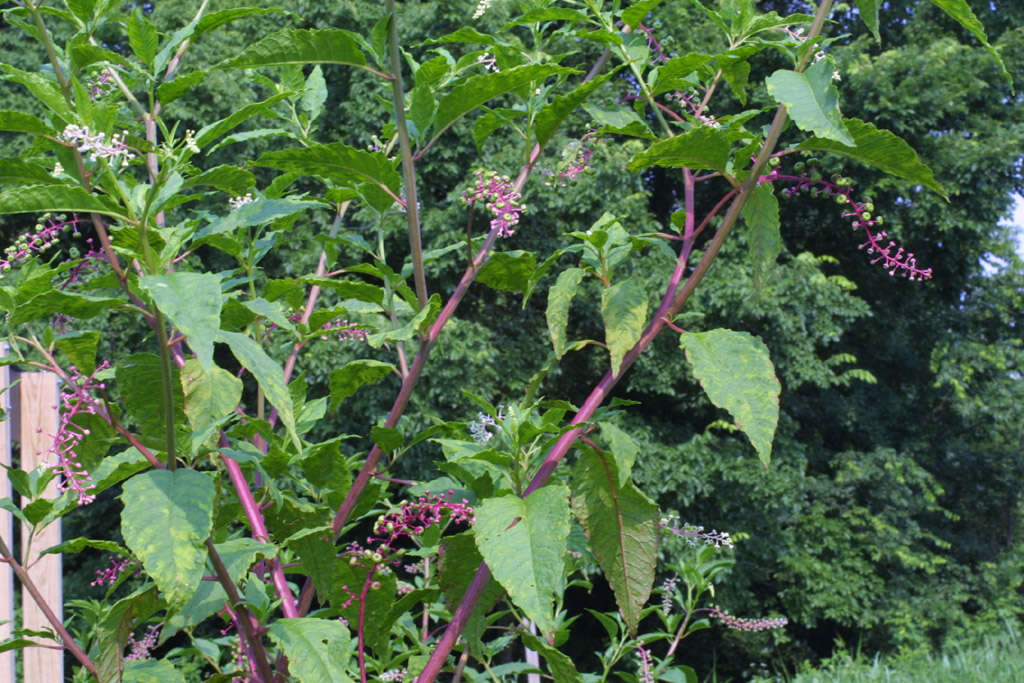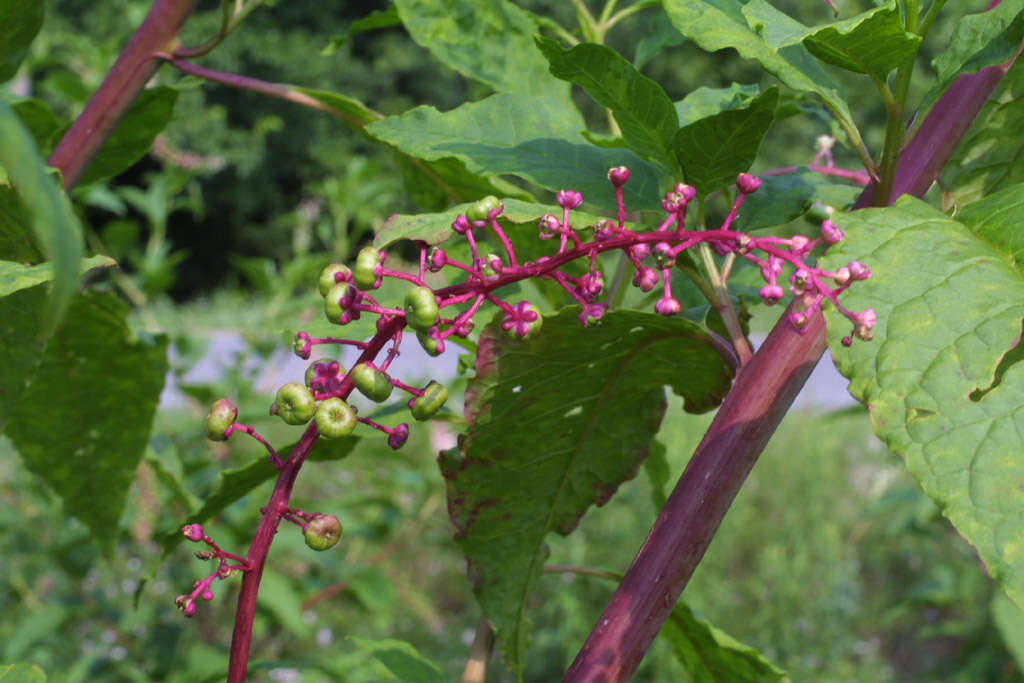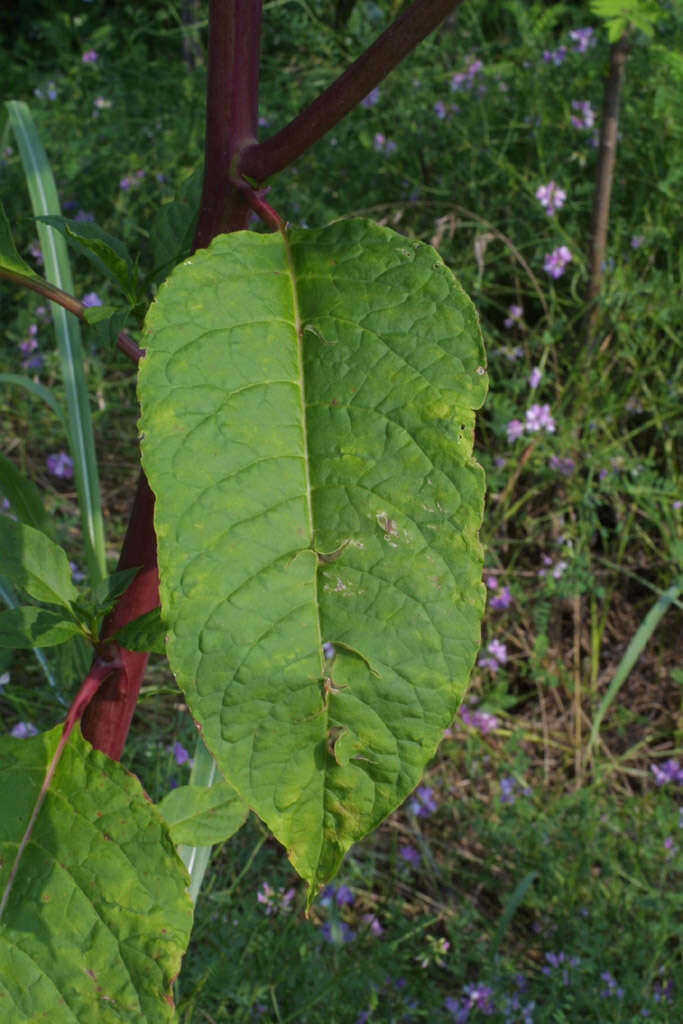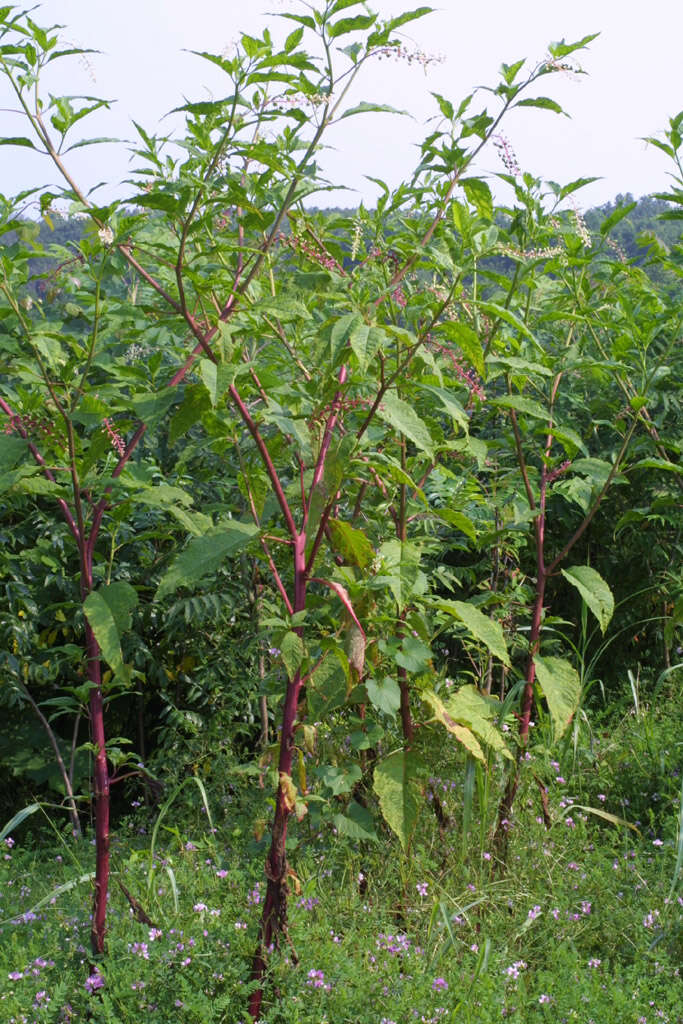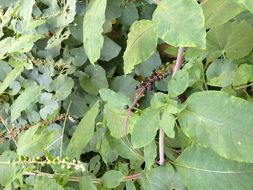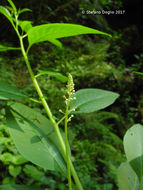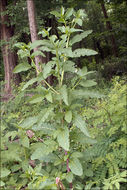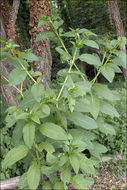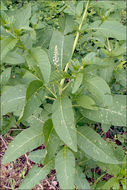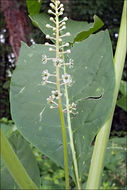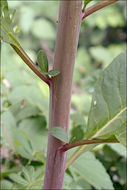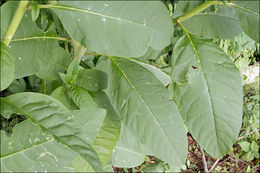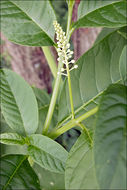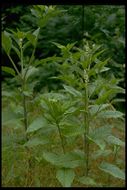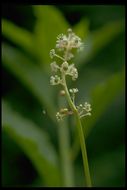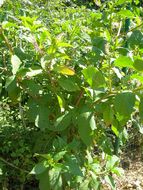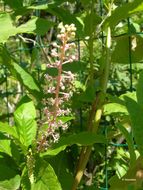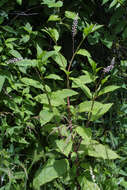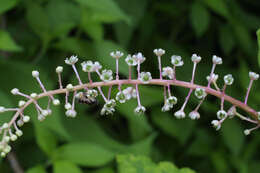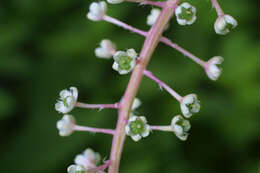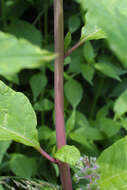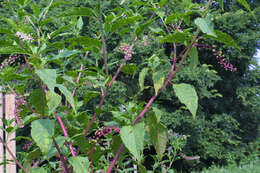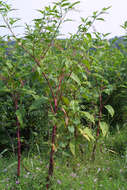-
-
-
-
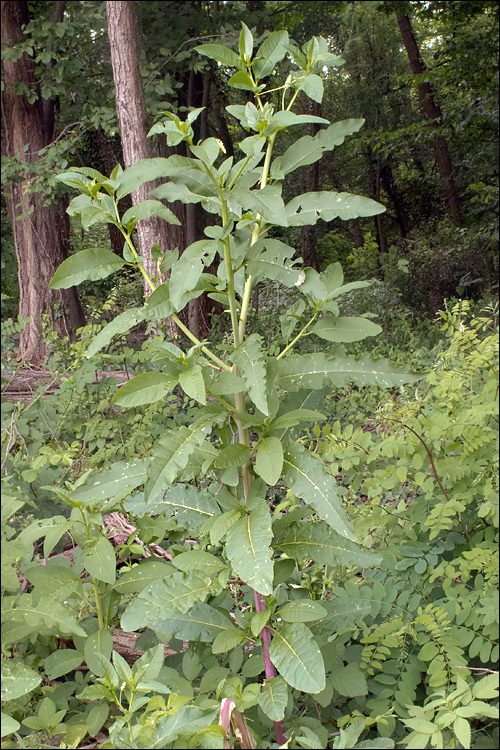
Slo.: navadna barvilnica - Habitat: wood edge, next to a wine yard, under broad leaved trees, semiruderal place, almost flat terrain on a small hill, relatively dry place, in half shade, partly protected from direct rain by tree canopies, average precipitations 1.500-1.600 mm/year, average temperature 12-14 deg C, elevation 90 m (300 feet), submediterranean phytogeographical region. - Substratum: soil. - Comment: Growing in a group of several plants. Relatively uncommon and according to Ref.:(1) taxonomically poorly studied introduced species in Slovenia (origin in North America). An alternative could also be P. acinosa Roxb., which has ovate leaves in opposite to P. Americana, which should have lanceolate (Ref.:(1)) leaves (hard to say for the plants on my pictures!). However, since the stamens are evidently not positioned in two concentric circles (as for P. acinosa) P. americana seems to be a better determination. - Ref.: (1) A.Martinčič et all., Mala Flora Slovenije, Tehnična Zaloba Slovenije (2007), p 188. (2) K.Lauber and G.Wagner, Flora Helvetica, 5. Auflage, Haupt (2012), p 1097.
-
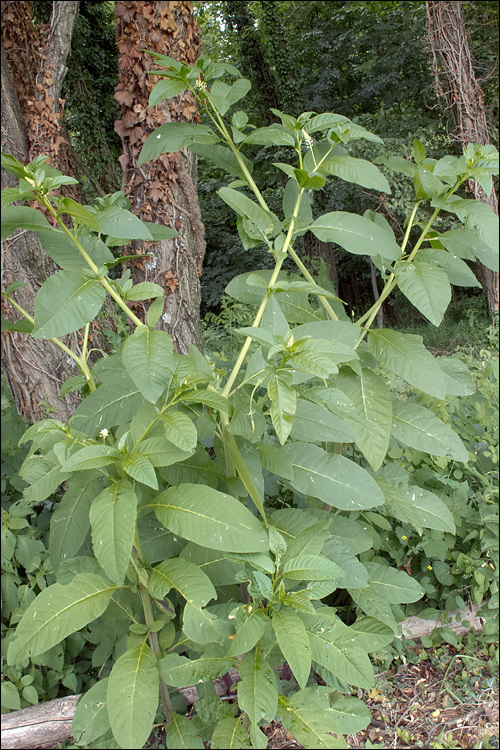
Slo.: navadna barvilnica - Habitat: wood edge, next to a wine yard, under broad leaved trees, semiruderal place, almost flat terrain on a small hill, relatively dry place, in half shade, partly protected from direct rain by tree canopies, average precipitations 1.500-1.600 mm/year, average temperature 12-14 deg C, elevation 90 m (300 feet), submediterranean phytogeographical region. - Substratum: soil. - Comment: Growing in a group of several plants. Relatively uncommon and according to Ref.:(1) taxonomically poorly studied introduced species in Slovenia (origin in North America). An alternative could also be P. acinosa Roxb., which has ovate leaves in opposite to P. Americana, which should have lanceolate (Ref.:(1)) leaves (hard to say for the plants on my pictures!). However, since the stamens are evidently not positioned in two concentric circles (as for P. acinosa) P. americana seems to be a better determination. - Ref.: (1) A.Martinčič et all., Mala Flora Slovenije, Tehnična Zaloba Slovenije (2007), p 188. (2) K.Lauber and G.Wagner, Flora Helvetica, 5. Auflage, Haupt (2012), p 1097.
-
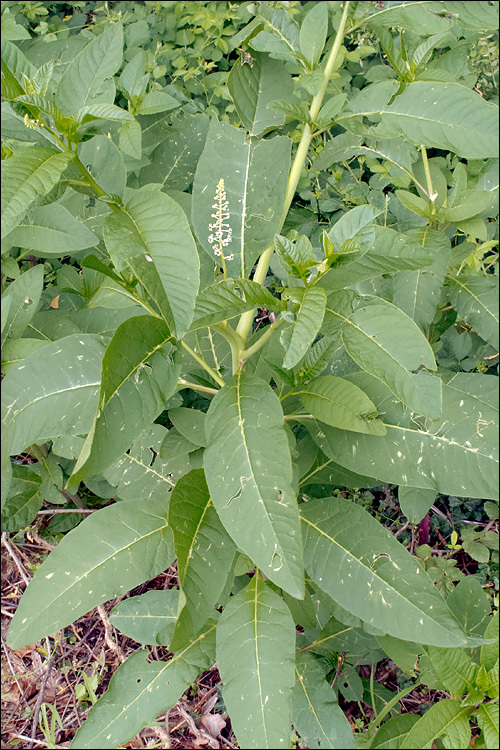
Slo.: navadna barvilnica - Habitat: wood edge, next to a wine yard, under broad leaved trees, semiruderal place, almost flat terrain on a small hill, relatively dry place, in half shade, partly protected from direct rain by tree canopies, average precipitations 1.500-1.600 mm/year, average temperature 12-14 deg C, elevation 90 m (300 feet), submediterranean phytogeographical region. - Substratum: soil. - Comment: Growing in a group of several plants. Relatively uncommon and according to Ref.:(1) taxonomically poorly studied introduced species in Slovenia (origin in North America). An alternative could also be P. acinosa Roxb., which has ovate leaves in opposite to P. Americana, which should have lanceolate (Ref.:(1)) leaves (hard to say for the plants on my pictures!). However, since the stamens are evidently not positioned in two concentric circles (as for P. acinosa) P. americana seems to be a better determination. - Ref.: (1) A.Martinčič et all., Mala Flora Slovenije, Tehnična Zaloba Slovenije (2007), p 188. (2) K.Lauber and G.Wagner, Flora Helvetica, 5. Auflage, Haupt (2012), p 1097.
-
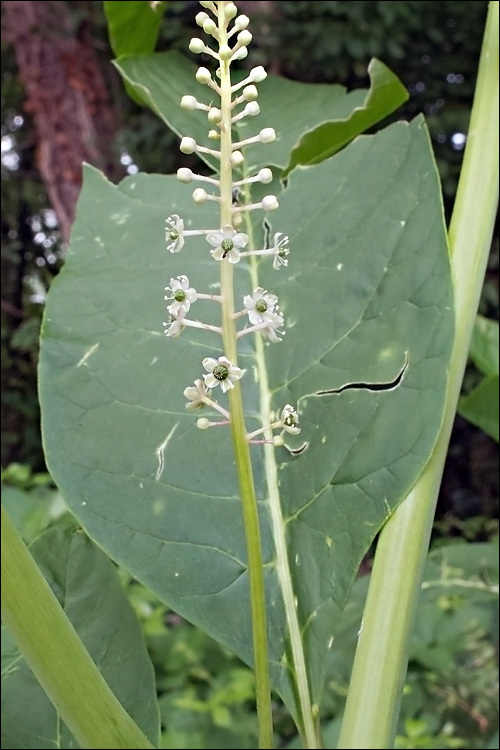
Slo.: navadna barvilnica - Habitat: wood edge, next to a wine yard, under broad leaved trees, semiruderal place, almost flat terrain on a small hill, relatively dry place, in half shade, partly protected from direct rain by tree canopies, average precipitations 1.500-1.600 mm/year, average temperature 12-14 deg C, elevation 90 m (300 feet), submediterranean phytogeographical region. - Substratum: soil. - Comment: Growing in a group of several plants. Relatively uncommon and according to Ref.:(1) taxonomically poorly studied introduced species in Slovenia (origin in North America). An alternative could also be P. acinosa Roxb., which has ovate leaves in opposite to P. Americana, which should have lanceolate (Ref.:(1)) leaves (hard to say for the plants on my pictures!). However, since the stamens are evidently not positioned in two concentric circles (as for P. acinosa) P. americana seems to be a better determination. - Ref.: (1) A.Martinčič et all., Mala Flora Slovenije, Tehnična Zaloba Slovenije (2007), p 188. (2) K.Lauber and G.Wagner, Flora Helvetica, 5. Auflage, Haupt (2012), p 1097.
-
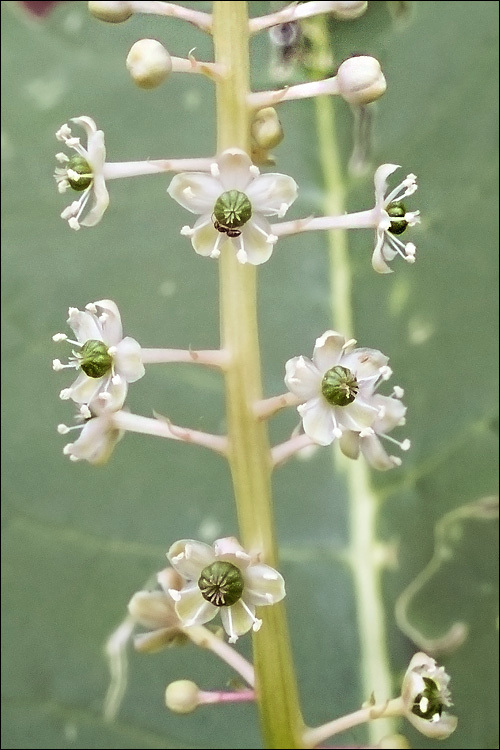
Slo.: navadna barvilnica - Habitat: wood edge, next to a wine yard, under broad leaved trees, semiruderal place, almost flat terrain on a small hill, relatively dry place, in half shade, partly protected from direct rain by tree canopies, average precipitations 1.500-1.600 mm/year, average temperature 12-14 deg C, elevation 90 m (300 feet), submediterranean phytogeographical region. - Substratum: soil. - Comment: Growing in a group of several plants. Relatively uncommon and according to Ref.:(1) taxonomically poorly studied introduced species in Slovenia (origin in North America). An alternative could also be P. acinosa Roxb., which has ovate leaves in opposite to P. Americana, which should have lanceolate (Ref.:(1)) leaves (hard to say for the plants on my pictures!). However, since the stamens are evidently not positioned in two concentric circles (as for P. acinosa) P. americana seems to be a better determination. - Ref.: (1) A.Martinčič et all., Mala Flora Slovenije, Tehnična Zaloba Slovenije (2007), p 188. (2) K.Lauber and G.Wagner, Flora Helvetica, 5. Auflage, Haupt (2012), p 1097.
-
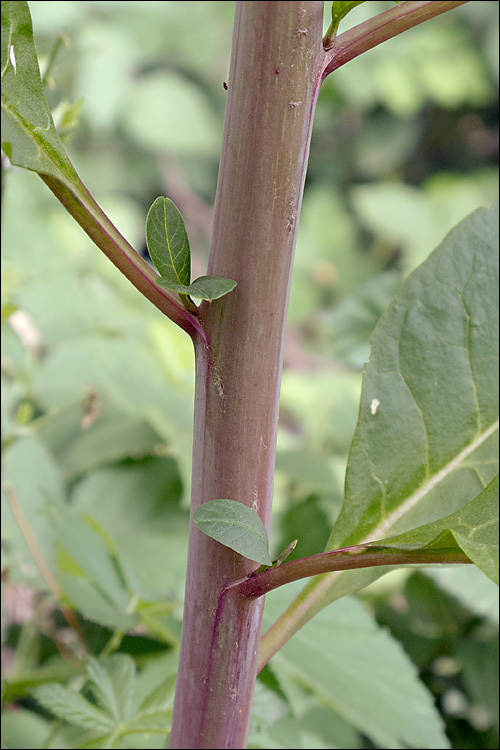
Slo.: navadna barvilnica - Habitat: wood edge, next to a wine yard, under broad leaved trees, semiruderal place, almost flat terrain on a small hill, relatively dry place, in half shade, partly protected from direct rain by tree canopies, average precipitations 1.500-1.600 mm/year, average temperature 12-14 deg C, elevation 90 m (300 feet), submediterranean phytogeographical region. - Substratum: soil. - Comment: Growing in a group of several plants. Relatively uncommon and according to Ref.:(1) taxonomically poorly studied introduced species in Slovenia (origin in North America). An alternative could also be P. acinosa Roxb., which has ovate leaves in opposite to P. Americana, which should have lanceolate (Ref.:(1)) leaves (hard to say for the plants on my pictures!). However, since the stamens are evidently not positioned in two concentric circles (as for P. acinosa) P. americana seems to be a better determination. - Ref.: (1) A.Martinčič et all., Mala Flora Slovenije, Tehnična Zaloba Slovenije (2007), p 188. (2) K.Lauber and G.Wagner, Flora Helvetica, 5. Auflage, Haupt (2012), p 1097.
-
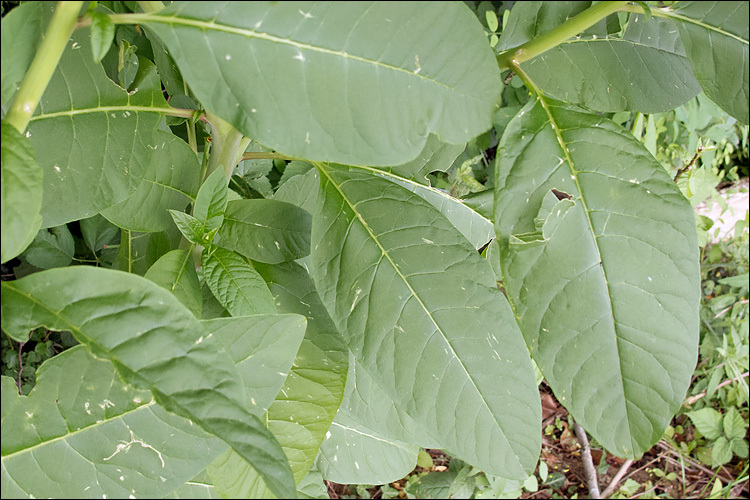
Slo.: navadna barvilnica - Habitat: wood edge, next to a wine yard, under broad leaved trees, semiruderal place, almost flat terrain on a small hill, relatively dry place, in half shade, partly protected from direct rain by tree canopies, average precipitations 1.500-1.600 mm/year, average temperature 12-14 deg C, elevation 90 m (300 feet), submediterranean phytogeographical region. - Substratum: soil. - Comment: Growing in a group of several plants. Relatively uncommon and according to Ref.:(1) taxonomically poorly studied introduced species in Slovenia (origin in North America). An alternative could also be P. acinosa Roxb., which has ovate leaves in opposite to P. Americana, which should have lanceolate (Ref.:(1)) leaves (hard to say for the plants on my pictures!). However, since the stamens are evidently not positioned in two concentric circles (as for P. acinosa) P. americana seems to be a better determination. - Ref.: (1) A.Martinčič et all., Mala Flora Slovenije, Tehnična Zaloba Slovenije (2007), p 188. (2) K.Lauber and G.Wagner, Flora Helvetica, 5. Auflage, Haupt (2012), p 1097.
-

Slo.: navadna barvilnica - Habitat: wood edge, next to a wine yard, under broad leaved trees, semiruderal place, almost flat terrain on a small hill, relatively dry place, in half shade, partly protected from direct rain by tree canopies, average precipitations 1.500-1.600 mm/year, average temperature 12-14 deg C, elevation 90 m (300 feet), submediterranean phytogeographical region. - Substratum: soil. - Comment: Growing in a group of several plants. Relatively uncommon and according to Ref.:(1) taxonomically poorly studied introduced species in Slovenia (origin in North America). An alternative could also be P. acinosa Roxb., which has ovate leaves in opposite to P. Americana, which should have lanceolate (Ref.:(1)) leaves (hard to say for the plants on my pictures!). However, since the stamens are evidently not positioned in two concentric circles (as for P. acinosa) P. americana seems to be a better determination. - Ref.: (1) A.Martinčič et all., Mala Flora Slovenije, Tehnična Zaloba Slovenije (2007), p 188. (2) K.Lauber and G.Wagner, Flora Helvetica, 5. Auflage, Haupt (2012), p 1097.
-
1999 California Academy of Sciences
CalPhotos
-
1999 California Academy of Sciences
CalPhotos
-
-
-
Barnett's Woods State Natural Area, Montgomery County, Tennessee, US
-
Barnett's Woods State Natural Area, Montgomery County, Tennessee, US
-
Barnett's Woods State Natural Area, Montgomery County, Tennessee, US
-
Barnett's Woods State Natural Area, Montgomery County, Tennessee, US
-
Land Between the Lakes National Recreation Area, Trigg County, Kentucky, US
-
Land Between the Lakes National Recreation Area, Trigg County, Kentucky, US
-
Land Between the Lakes National Recreation Area, Trigg County, Kentucky, US
-
Land Between the Lakes National Recreation Area, Trigg County, Kentucky, US
-
Keri Drive, Pleasant View, Cheatham County, Tennessee, US

